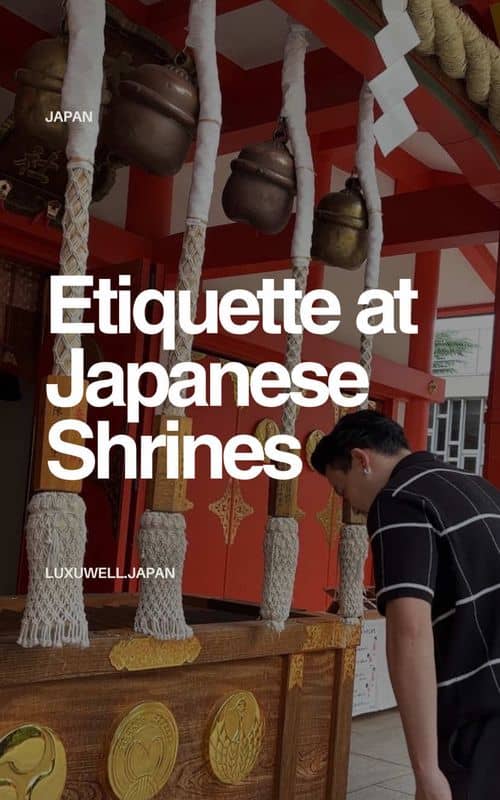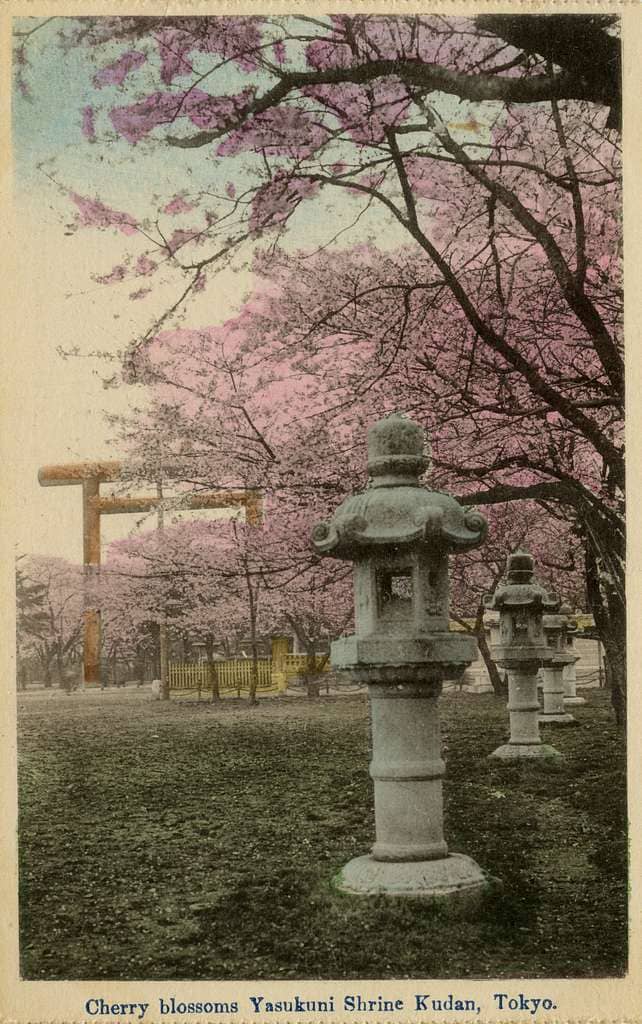
Yasukuni Shrine Tokyo
A significant Shinto shrine commemorating Japan's war dead, featuring a controversial museum and serene gardens.

Highlights
Must-see attractions

Social
From TikTok & Reddit
Best Time
See cherry blossoms bloom

Yasukuni Shrine Tokyo
Best Time
See cherry blossoms bloom

Highlights
Must-see attractions
A significant Shinto shrine commemorating Japan's war dead, featuring a controversial museum and serene gardens.
"A place of remembrance and beauty, but with a complex and debated historical narrative."

🎯 Shrine Etiquette
Bow at the torii gate & walk on sides. Avoid the center path.
🤫 Quiet Respect
Keep voices low; avoid eating/drinking while walking.

Highlights
Discover the most iconic attractions and experiences

Yushukan Museum
Explore Japan's military history from the Meiji Restoration to WWII. Features artifacts and exhibits detailing wartime efforts.
Main Shrine Hall
The central structure of Yasukuni Shrine, dedicated to the spirits of those who died for Japan. Admire its traditional Shinto architecture.

Cherry Blossom Garden
A serene garden offering beautiful cherry blossoms in spring, providing a peaceful contrast to the shrine's historical context.
Plans like a pro.
Thinks like you
Planning Your Visit
Respectful Conduct at Yasukuni Shrine
Understanding the Yushukan Museum
Best Times
Insider Tips
from TikTok, Instagram & Reddit
🎯 Shrine Etiquette
Bow at the torii gate & walk on sides. Avoid the center path.
🤫 Quiet Respect
Keep voices low; avoid eating/drinking while walking.
🏛️ Museum Perspective
Yushukan offers a specific view; consider Showakan for balance.
🌸 Spring Blooms
Visit in spring for beautiful cherry blossoms.
Tips
from all over the internet
🎯 Shrine Etiquette
Bow at the torii gate & walk on sides. Avoid the center path.
🤫 Quiet Respect
Keep voices low; avoid eating/drinking while walking.
🏛️ Museum Perspective
Yushukan offers a specific view; consider Showakan for balance.
🌸 Spring Blooms
Visit in spring for beautiful cherry blossoms.
What Travellers Say
Reviews Summary
Yasukuni Shrine is a significant historical site with a controversial past, particularly concerning the Yushukan Museum's portrayal of Japanese wartime history. Visitors often find the shrine grounds and gardens to be peaceful and beautiful, especially during cherry blossom season. The museum offers a unique, though often debated, perspective on Japan's military endeavors.
"A beautiful and vast shrine with a presence. The large tori gate greeting you as you enter the shrine makes this temple unique among the temple in Tokyo. When you enter the temple, you are greeted with a large public area with many sections to explore. Going near the end of the day is unique as you get to see the sun setting over the tori gate and the temple."
Hun Sern Tan
"It's beautiful. The shrine is dedicated to the respect of all those who died fighting for Japan from the Meiji Era onward. There is the shrine proper, the Yushukan a museum to preserve the memory of the kami, an archive, a beautiful garden and several monuments.
The shrine is very important and there is a lot of people there during the day. The best time to be there is very early in the morning."
Jean-François April
"Founded by Emperor Meiji in June 1869 to commemorate those who died in service for Japan.
The shrine contains names of almost 2,5 million men including one thousand war criminals there of whom 12 were charged with class A crimes.
Because of this controversy the last two emperors never visited the shrine.
There's also a military museum adjacent to the shrine."
Vadim Solodukhin
What People Like
What People Dislike
Frequently Asked Questions
🚇 🗺️ Getting There
Yasukuni Shrine is easily accessible by public transport. Take the JR Chuo Line to Ichigaya Station or the Tokyo Metro Tozai Line to Kudanshita Station. Both stations are a short walk from the shrine.
Yes, it's located near the Imperial Palace East Garden and Chidorigafuchi moat, making it convenient to combine with other sightseeing in central Tokyo.
From Shinjuku Station, take the JR Chuo Line (Rapid) to Ichigaya Station, then it's about a 10-minute walk. Alternatively, take the Toei Shinjuku Line to Kudanshita Station.
Limited parking is available, but it's highly recommended to use public transportation due to potential congestion and the shrine's central location.
Yes, taxis are readily available in Tokyo. You can provide the address to your driver, but be aware of potential traffic delays.
🎫 🎫 Tickets & Entry
Entry to the shrine grounds is free. However, there is an admission fee for the Yushukan Museum.
The shrine grounds are generally open from early morning until sunset. The Yushukan Museum has specific operating hours, typically from 9:00 AM to 4:30 PM, but it's best to check their official website for the most current information.
Admission fees for the Yushukan Museum are subject to change. Please check the official Yasukuni Shrine website for the latest pricing details.
Advance booking is generally not required for the shrine grounds. For the Yushukan Museum, it's usually possible to purchase tickets on-site, but checking their website is advisable, especially during peak seasons.
Yes, Yasukuni Shrine hosts various festivals and events throughout the year, including the Mitama Matsuri in July and traditional archery demonstrations.
🎫 🧭 Onsite Experience
Visitors are expected to be respectful. This includes bowing at the torii gate, walking on the sides of paths, and refraining from loud conversations or eating/drinking while walking.
The Yushukan Museum showcases Japan's military history, focusing on the nation's modernization and its involvement in wars, particularly WWII. It presents a perspective that emphasizes the sacrifices made.
Yes, Yasukuni Shrine is a controversial site due to its enshrinement of individuals convicted of war crimes and its historical interpretations. Visitors should be aware of this context.
Beyond the Yushukan Museum, you can explore the main shrine hall, beautiful gardens (especially lovely during cherry blossom season), and various sub-shrines.
Photography is generally permitted on the shrine grounds, but restrictions may apply within certain buildings or during specific ceremonies. Always look for signage indicating where photos are not allowed.
📸 📸 Photography
The main torii gate, the central shrine building, and the gardens (especially during cherry blossom season) offer picturesque photo opportunities. The lanterns during Mitama Matsuri are also stunning.
Photography inside the Yushukan Museum is typically restricted. Please adhere to the signage within the museum to avoid any issues.
A standard DSLR or mirrorless camera with a versatile lens (e.g., 24-70mm) is suitable. For the gardens, a wide-angle lens can capture the scenery, and a telephoto lens might be useful for details.
Early mornings or late afternoons can offer softer light. During cherry blossom season, the gardens are particularly photogenic. The Mitama Matsuri at night provides a unique, illuminated backdrop.
Consider capturing the traditional architecture, the serene garden landscapes, and any ongoing ceremonies or festivals. The contrast between the historical exhibits and the natural beauty can also be striking.
For Different Travelers
Tailored advice for your travel style
👨👩👧 Families with Kids
When visiting with children, it's advisable to focus on the serene aspects of the shrine and its gardens. Explain the concept of a shrine as a place of remembrance and respect in simple terms. Be mindful of the museum's content, as it may be sensitive for younger audiences. Ensure children understand the importance of quiet and respectful behavior within the shrine precincts.
🤔 History Enthusiasts
However, it's crucial to approach the Yushukan Museum with a critical eye. Many historians and visitors note that the museum presents a nationalistic interpretation of events, often omitting or downplaying controversial aspects of Japan's wartime actions. To gain a more balanced understanding, consider visiting other museums in Tokyo, such as the Showakan, which offers a different perspective on the war experience.
Deep Dives
In-depth insights and expert knowledge
Understanding Yasukuni Shrine's Historical Context
Visitors often find the Yushukan Museum within the shrine grounds to be a focal point. The museum presents a narrative that emphasizes Japan's wartime sacrifices and its role in liberating Asia, while downplaying or omitting accounts of wartime atrocities. This perspective is a key reason for the shrine's controversial status.
It's important for visitors to approach Yasukuni Shrine with an awareness of its complex history and the differing interpretations of events. While it serves as a memorial for the war dead, its commemoration of individuals convicted of war crimes is a sensitive issue that shapes many visitors' experiences and perceptions.
Navigating Shrine Etiquette
Before entering the main shrine grounds through the torii gate, it's customary to perform a slight bow. Once inside, you'll notice a central path. This path is traditionally reserved for the deities, so visitors are encouraged to walk along the sides.
Another key aspect of shrine etiquette is maintaining a quiet and respectful demeanor. Avoid loud conversations, and refrain from eating or drinking while walking through the grounds. This mindfulness contributes to the serene atmosphere of the shrine.
The Yushukan Museum Experience
The museum's narrative is often described as presenting a nationalistic viewpoint, focusing on the valor and sacrifices of Japanese soldiers. It aims to honor those who died for the Emperor and the nation. However, this perspective has drawn criticism for its selective presentation of history and its omission of wartime atrocities.
For those interested in military history, the Yushukan Museum provides a unique, albeit specific, insight into Japan's past. Visitors seeking a more comprehensive understanding of World War II are often advised to complement their visit with other historical sites and museums that offer broader perspectives.






Social
from TikTok, Instagram & Reddit